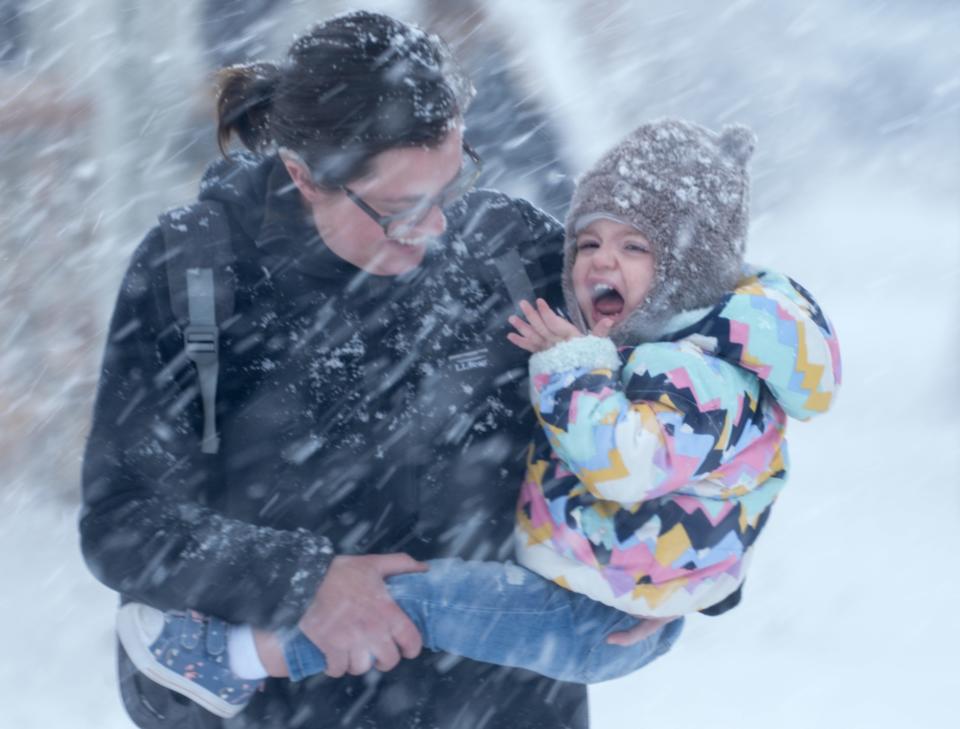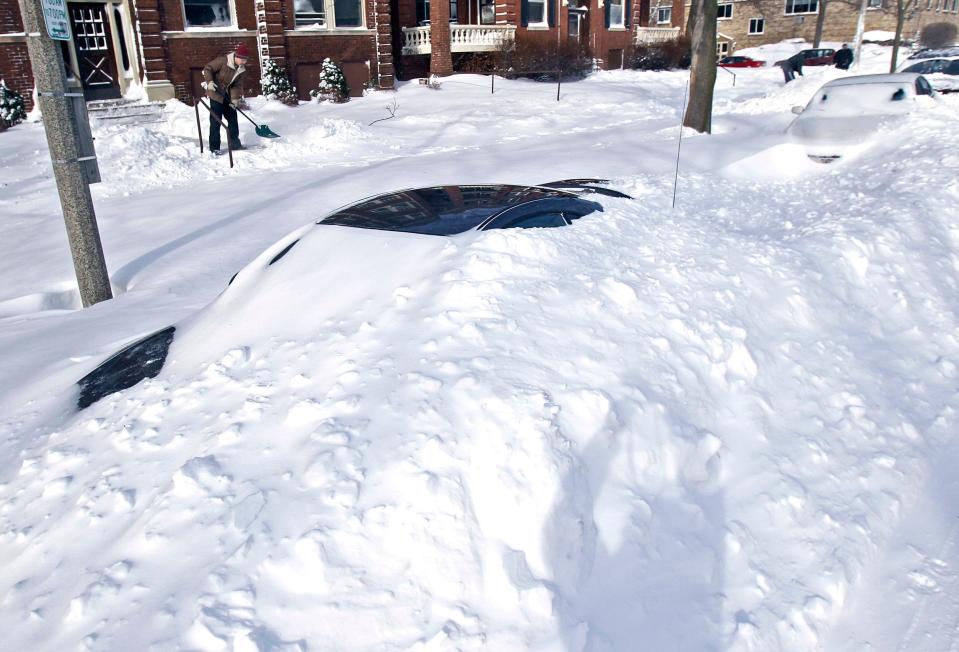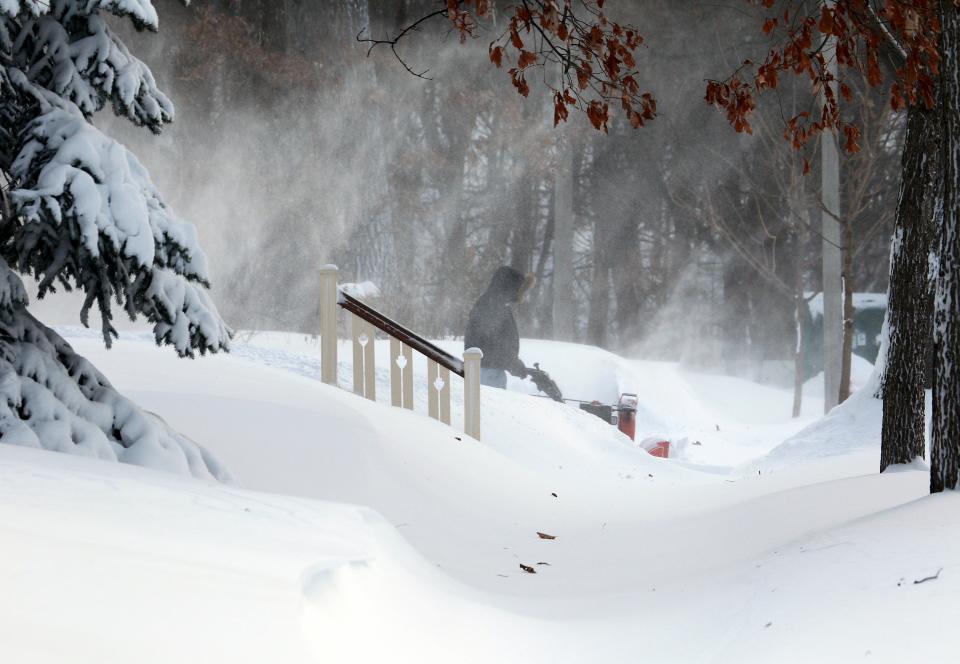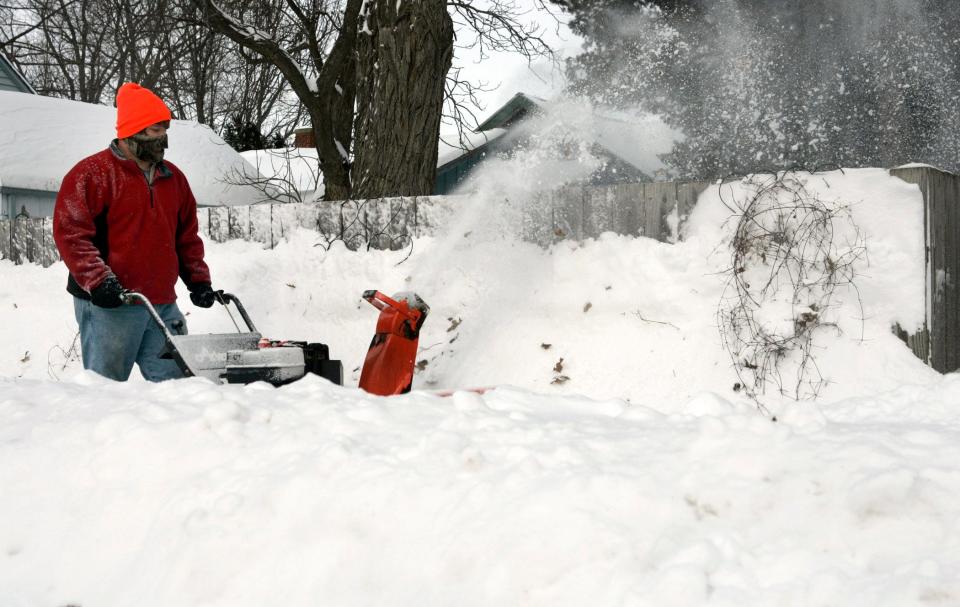What exactly constitutes a 'blizzard'? What about a 'winter storm watch'? Here are some weather terms to know
The Milwaukee area hasn't had an official blizzard since 2011, an unforgettable Groundhog Day extravaganza where the Milwaukee area picked up 16 inches of snow in a 24-hour window, and some nearby cities finished with as many as two feet of snow.
Among those stranded travelers were ticketholders for Super Bowl XLV in Dallas, where the Packers would take on (and beat) the Pittsburgh Steelers.
The inclement weather headed to the Midwest over the next few days remains a bit of a wild card, but it's on track to reach "blizzard" status.
So what exactly constitutes a blizzard, and what about a winter-storm watch or winter-storm warning? Get to know these terms.
'Blizzard' has nothing to do with snowfall volume
It's been over 4 years since parts of southern WI were under a Blizzard Warning. Kenosha, Racine, and Walworth counties were under one on Nov. 25, 2018.
Milwaukee county hasn't been under one since the Groundhogs Day blizzard of 2011. #wiwx pic.twitter.com/HxvDjAWjss— Sam Kuffel (@SamKuffelWx) December 19, 2022
We may picture snow falling when we think of it, but a blizzard is all about the snow blowing.
A winter storm doesn't get that lofty distinction unless it meets two criteria: sustained winds or regular gusts of 35 miles per hour or more, and visibility of a quarter mile or less. Even a couple inches of snow can trigger the "blizzard" mark.
What's 'wind chill'?
Most people know the basic premise: Wind chill is how the air temperature feels on your skin, taking the wind into account along with the actual temperature.
The National Weather Service explains that wind blows away the heat naturally emitting from our body, and the faster the wind speed, the faster our body loses heat.
The NWS also has a wind chill calculator if you know the temperature and speed. A 32-degree day with 10 mile-per-hour winds feels like 23.7 degrees. At 20 miles per hour, it's 20 degrees. At 35 mph, it's 16.6 degrees. At 50 mph, it's 14.4.
Wind chill is the "feels like" temperature — objects aren't actually colder than the air temperature. So even if wind chill is 10 degrees, you won't get frostbite if the air temperature is 32 degrees or above.
What's the difference between a winter storm watch, advisory and warning?

There are three distinctions of winter storm monitoring that the National Weather Service uses in following storms, and they ascend in severity: winter storm watch, winter storm advisory and winter storm warning.
"A winter storm watch is just a general heads-up for the potential of significant weather, generally 24 hours or more in the future but as many as 48 to 72," said Andy Boxell, senior meteorologist with the NWS. "An advisory is impactful but not to the degree you'd expect from a warning. A warning is just a higher-confidence threshold that the combination of snow, wind and in some cases when we have sleet mixed in, (will cause a problem)."
What's a 'snow emergency'?

The NWS consults regularly with a variety of public entities when it comes to plowing and other aspects of public safety, but it's up to individual governments to declare a "snow emergency," which usually activates regulations to facilitate easier snow removal.
Namely, you can't park where you normally park, often meaning no parking on major roads and alternate-side parking only on side streets. The City of Milwaukee offers text alerts for those who want details when snow emergencies go into effect.
At what point do I need to shovel this stuff?

The City of Milwaukee asks you to clear sidewalks 24 hours after the snowfall stops, but we will not personally blame you if it's 45-50 mile-per-hour winds on Friday and you choose to wait a day.

This article originally appeared on Milwaukee Journal Sentinel: Winter storm watch, warning difference and more weather terms to know

